The end of the year is typically a time when we look back, and the end of a decade is no different. The events of the past 10 years in Edmonton and northern Alberta have made us laugh and cry, and reflect on all that has happened in this place we call home.

From a lengthy, high-profile court case over the deaths of two seniors and the Edmonton Oilers’ first playoff run in a decade, to the dramatic political ups and downs in Alberta and more heartache and pain than we care to report, here are 15 stories and events — in approximate chronological order — that generated in-depth news coverage this past decade.
What were the stories and events that moved you? Vote in our poll at the bottom of the story.
The disappearances of Lyle and Marie McCann and the case against Travis Vader
The saga of Lyle and Marie McCann began in 2010 with their mysterious disappearance and will continue into 2020, when convicted killer Travis Vader is up for parole.
The St. Albert couple in their 70s vanished in western Alberta while on a camping trip to B.C. Their burned-out motorhome and a vehicle they had been towing were discovered days later near Edson, about 200 kilometres west of Edmonton. Their bodies have never been found and it’s not known how the couple was killed.
Shortly after the McCanns’ SUV was found, Travis Vader was declared a person of interest in the case. It wouldn’t be until 2012 that he was charged with first-degree murder in the McCann case. Two years later, the murder charges were stayed just days before a trial was to begin. Eventually, he was rearrested and his trial finally began in March 2016.
Justice Denny Thomas convicted Vader of second-degree murder, but later substituted the verdict with manslaughter because he had mistakenly used an outdated section of the Criminal Code.
Vader’s various appeals have been denied, but the McCann family has been told the convicted killer can apply for parole in the spring of 2020.
The Canadian Press summarized the ups and downs of the court case by saying “If Vader’s trial had been a TV legal drama, its twists and turns would have consumed an entire season.”

Slave Lake wildfire
On May 15, 2011, a wildfire swept through the town of Slave Lake, razing upwards of 40 per cent — or roughly one-third — of the buildings in the community about three hours north of Edmonton.
The fires destroyed more than 560 homes and businesses — including the town hall, library and a radio station — burned 22,000 hectares and forced 10,000 people to flee their homes.
Two months later, the Duke and Duchess of Cambridge toured through the fire-ravaged town while on their first royal tour as a married couple.

The Slave Lake fire was the first of several devastating fires in northern Alberta this decade. It caused more than $700 million in damage. At the time, it was the second-costliest insured disaster in Canadian history, according to the Insurance Bureau of Canada.
Hub mall shooting and the historic sentence of Travis Baumgartner

On June 15, 2012, four armoured guards were shot inside HUB Mall — a shopping and residential building on the University of Alberta campus.
The incident unfolded shortly after midnight, when five employees of the G4S security company arrived in an armoured truck to deliver cash to bank machines.
A few minutes later, four guards were shot and the fifth had vanished, along with hundreds of thousands of dollars in cash.
Three of the guards — Brian Ilesic, Eddie Rejano and Michelle Shegelski — died of their injuries while the fourth guard, Matthew Schuman, was seriously injured.
The next day, the fifth guard — Travis Baumgartner, who was 21 at the time — was arrested at the U.S. border crossing between Aldergrove, B.C. and Lyndon, Wash. He was caught with $330,000 in Canadian cash and would later be charged with three counts of first-degree murder, one count of attempted murder and four counts of robbery with a firearm.
Baumgartner, was sentenced to life in prison without parole eligibility for 40 years in 2013. At the time, it was the harshest sentence handed down in Canada since the death penalty was abolished in 1962.
READ MORE: Baumgartner sentenced to life in prison, not eligible for parole for 40 years

Twinning of dangerous Highway 63
Highway 63 is a northern Alberta road that connects Edmonton to northern Alberta, including many oilsands sites. It was dubbed “The Highway of Death” after being the scene of numerous fatal collisions over the years.
For decades, a 240-kilometre stretch of single-lane road ferried not only workers heading up to jobs in the oil and gas industry, but also big rigs and wide loads transporting equipment and goods to the north. It could be a long, slow trek made more perilous by drivers passing dangerously.
The Progressive Conservative government of the time had promised to twin the highway in 2006, but little was done until former premier Alison Redford made it a priority in 2012 after seven people were killed in a crash.
The work to twin the road between Highway 55, just outside of Grassland, up to Fort McMurray, was complete in 2015.

Deaths of EPS Const. Daniel Woodall and RCMP Const. David Wynn
2015 saw two tragedies befall police services in the Edmonton region.
In January, Const. David Wynn was shot at an Edmonton-area casino. Career criminal Shawn Rehn was out on bail on other charges when he killed Wynn and wounded an auxiliary constable. Rehn was later found dead of an apparent suicide.
Wynn, who was 42, was born in Newcastle, N.B., and left behind a wife and three sons.
Wynn’s death led to two changes: bail hearings in Alberta are now handled by Crown prosecutors, and activities for RCMP auxiliary constables have also been restricted.

That same year, Edmonton Police Service Const. Daniel Woodall was also killed in the line of duty.
On June 8, 2015, the 35-year-old was fatally shot while trying to serve an arrest warrant at the west end home of a man under investigation for anti-Semitic bullying.
Woodall joined the Edmonton Police Service in 2007 after starting his career with the Greater Manchester Police in England.
Woodall left behind a wife and two sons, who after the tragedy moved back to Manchester to be closer to family.
Constable Daniel Woodall School in the Windermere area was named after the fallen officer, and the exterior features Edmonton Police Service colours.

Rise and fall of Alison Redford
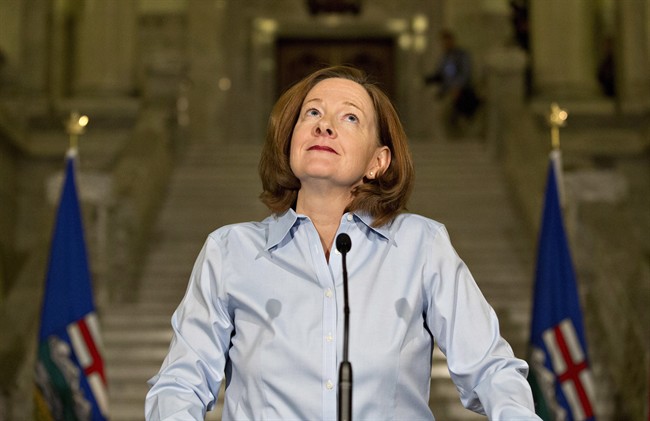
Alison Redford became Alberta’s first female premier after clinching the Progressive Conservative Party leadership in October 2011, by signing up non-traditional conservative voters in order to beat Gary Mar: the perceived frontrunner and the preferred candidate of caucus.
At the time, Redford was portrayed as a progressive voice for Alberta’s future: a working mother who found support among those looking for a younger, more moderate conservative leader. Redford ran on a family-friendly platform that emphasized health and education.

Get daily National news
She went on to win a majority government in 2012 during an election in which many predicted the more right-wing Wildrose Party would oust the PCs’ 40-year reign.
Redford received a strong vote of confidence from members of her party in a November 2013 leadership review, but a series of travel spending scandals eroded support within her own caucus in the ensuing months.
- Calgary’s termination of Green Line adds extra frustration for expropriated Eau Claire residents
- Calgary police searching for sexual assault suspect after attack at swimming hole
- Home ownership feels out of reach for many in Calgary
- Kananaskis council planning fireguards to protect from wildfire threat
First was $45,000 spent to get to Ottawa on a government plane to Nelson Mandela’s funeral and to get home early on a commercial flight to swear in her new cabinet in December 2013. Redford refused to pay back the money until a caucus revolt three months later.
Then records revealed Redford’s executive assistant Brad Stables billed taxpayers more than $9,000 to stay 42 nights at the Fairmont Hotel Macdonald — one of Edmonton’s most expensive hotels.
Redford also faced renewed accusations of extravagant travel over a government flight home from a Palm Springs vacation to attend former premier Ralph Klein’s funeral.
The cost of flying the government plane down empty and returning with Redford, her daughter and two bodyguards was $9,200. She also faced criticism for other flights involving her daughter and friends, as well as accusations she used a government plane for a party fundraiser in Grande Prairie. The government fleet was eventually grounded.
READ MORE: Premier Redford reacts to PC party executive’s call for her resignation
In March 2014, several MLAs quit the Tory caucus in open protest. Redford was hauled before PC party executives behind closed doors, where she was taken to task and given an unspecified “work plan” to follow.
But it appeared to be too little, too late. Days later, on March 19, Redford held a news conference in the legislature rotunda, where she announced she was stepping down as premier in the coming days after “mistakes were made” by misusing taxpayers’ money.

After her resignation the auditor general released a scathing report outlining the improper spending, which included a plan to convert space in the Federal Building near the Legislature into personal living space, referred to as the “sky palace.”
Dave Hancock became interim premier and Redford resigned as an MLA later that year.
READ MORE: Alison Redford’s Alberta legacy — uniting Progressive Conservatives against her
The resignation set the Progressive Conservative Party into a tailspin, which the election of new leader Jim Prentice could not stop. That led to the next event in our list…
The NDP orange crush of 2015
In a startling turn, Rachel Notley’s NDP won a majority government in Alberta on May 4, 2015, ending the 44-year reign of the Progressive Conservatives.
Premier Jim Prentice dropped the writ a year earlier than necessary and expected an easy victory for the PCs, whose party held 70 of 87 seats at dissolution. The NDP had never won more than 16 seats in an election, but in 2015, secured 54 — and only four were held by incumbents.
READ MORE: NDP stomps out 44-year PC dynasty, Jim Prentice resigns
Analysts suggested Notley’s campaign was near-flawless and many political pundits said the tide started to turn with her victory over Prentice in the televised leaders’ debate.
Notley was largely viewed as having the best performance and Prentice also came under fire for saying “I know math is difficult” to Notley, in reference to a what he suggested was a miscalculation in the proposed NDP budget released two days prior — a remark widely seen as sexist and patronizing.

Notley capitalized on the unpopularity of the PCs’ latest budget and ran on a message of creating jobs through tax incentives, promoting oil-refining jobs at home and restoring cuts to health care and classrooms.
Notley was sworn-in as the 17th premier of Alberta along with her cabinet on May 24, 2015, ending an 80-year streak of centre-right governments in Alberta.
The swearing-in ceremony was a public event, held on the steps of the Alberta legislature in front of a large crowd while free popsicles and food were distributed from food trucks.

Fort McMurray wildfire
Over the course of an afternoon on Tuesday, May 3, 2016, life changed forever for thousands of Albertans as a wildfire later nicknamed “The Beast” consumed large parts of Fort McMurray.
The fire, which began a few days earlier in the heavily-wooded area around the community in northeastern Alberta, doubled in size overnight Monday to Tuesday — a day that began clear and bright, with little visible sign of what was to come.
Fire officials cautioned not to have a false sense of security — things were set to get worse before it got better.
“We’re in for a rough day. It will wake up and it will come back,” Regional Fire Chief of Wood Buffalo Darby Allen warned in a morning news conference.
Hours later, the weather shifted and smoke and flames flooded the sky. The fire raged towards Fort McMurray, jumping Highway 63 and sending the temperature soaring above 30 C.
More than 80,00 people evacuated the city over the course of the afternoon, with many fleeing south to Lac La Biche, Cold Lake, Edmonton and anywhere that would take them.
Roads became overwhelmed by traffic. Vehicles moved at a snail’s pace as thick smoke plunged the area into darkness, with apocalyptic-like ash and flames raining down.
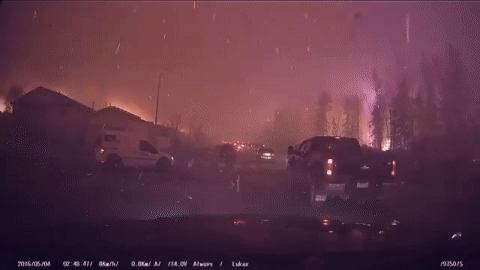
Those stuck because of the fire headed north, where work camps took more than 10,000 people. Airlines then stepped up to charter those stranded evacuees south.
The province declared a state of emergency and Fort McMurray was essentially closed for weeks, as tests revealed there were toxic chemicals in the ash, soil and air. Nearly a month later, a phased re-entry to the community began and the painstaking rebuild began.
The wildfire ended up destroying 2,579 homes. More than 60,000 insurance claims were made, at a cost of about $3.6 billion, according to the Insurance Bureau of Canada. It was the most expensive disaster for insurers in the country’s history.
Three years later, those that returned are still dealing with construction issues, skyrocketing insurance premiums of as much as 700 per cent, PTSD and other lingering mental scars, a depressed housing market amid an economic slump, among other things.

Rogers Place opening in 2016

After years of negotiations between the City of Edmonton and the Katz Group, which included heated debates and threats of moving the Edmonton Oilers, the Rogers Place downtown arena opened in 2016, spurring other projects to revitalize the downtown core.
But before any building could happen, a deal had to be reached. The Katz Group pushed Northlands to the side, wanting no partnership with the non-profit to run the new facility.
Negotiations led to a trip to New York City in October 2011, where former Edmonton mayor Stephen Mandel and a city team – along with team owner Daryl Katz and his side – met with NHL commissioner Gary Bettman.
About a year later, as negotiations dragged on, the Oilers’ owner and an entourage visited Seattle, a city without an NHL franchise, but on the hunt to secure one. Many saw the moved as a veiled threat to move the team. Days after the trip, Katz issued an apology.
But the civic soap opera was far from over. After new demands were presented, city council unanimously voted to cease negotiations in October 2012, leaving Katz Group officials stunned.
By May, a deal was reached just months before the 2013 civic election and construction began in March 2014.
WATCH: Videos from the opening of Roger’s Place
Under the deal, the Edmonton Arena Corporation – a Katz Group company – operate the city-owned facility and pay maintenance expenses, and get all the revenue.
The project’s completion required thousands of workers, an enormous amount of material and hundreds of millions of dollars. Rogers Place replaced Rexall Place, home to the Edmonton Oilers since 1974. At 819,200 square feet, it’s almost twice as large as Rexall.
READ MORE: Rogers Place arena tour from top to bottom
As part of the deal, the Katz Group committed to spending $100 million on new developments — a number it has been far exceeded as we head into 2020.
The surrounding ICE District is home to the Stantec Tower and Edmonton Tower, as well as the luxury JW Marriott hotel and a yet-to-be-named second hotel. It is also home to several stores and restaurants.

Alberta recession from 2014 to 2017 and beyond
There is no one single story that encapsulates the economic hardship of the latter half of the decade, when Alberta went from boom to bust.
Oil prices tanked in the latter half of 2014, causing a slowdown in the entire provincial economy that continues into 2020.
Housing prices dropped, projects were cancelled or put off, layoffs happened en-masse, rigs moved south of the border, Western Canadian Select reached a record low of $11 a barrel in 2018, and investor confidence wavered.
READ MORE: Oilpatch buyers expected to stay on the sidelines in 2020
Frustration over what some Albertans saw as inaction by the federal government to help the province through the recession and approve projects that increase export capacity — thus raising oil prices — led to dozens of pro-oil and gas rallies and convoys across Alberta.
In December 2018, thousands of vehicles showed up for a 22-kilometre long convoy through the Nisku industrial area and on Anthony Henday Drive in Edmonton.
READ MORE: Commuter chaos in Edmonton after Nisku pipeline convoy moves into the city
In the winter of 2019, a convoy even made its way across the Prairies to protest on Parliament Hill.
The convoys protested against federal actions that critics say will make building pipelines more difficult.
U-Haul rampage through downtown Edmonton in 2017
On a September evening in 2017, Abdulahi Hasan Sharif rammed Const. Mike Chernyk and stabbed him multiple times outside an Edmonton Eskimos football game. An ISIS flag was found in Sharif’s car, which was abandoned at the stabbing scene north of the city’s downtown core.
Hours later, Sharif went on a rampage through downtown Edmonton with a U-Haul cube van, hitting four people and sending others scrambling for cover.
He was convicted of attempted murder in December 2019, when police confirmed they still believe it was a terrorist attack.

Edmonton Oilers’ losses, rotating door of coaches and first playoff run in 11 years

It was a rough decade for professional hockey fans in the city, highlighted by a single NHL playoff run in 2017.
READ MORE: Edmonton Oilers make playoffs for 1st time since 2006: What’s changed in the last 11 years?
Despite the acquisition of star players like Taylor Hall (who now plays for the Arizona Coyotes) and Connor McDavid, the team continues to come up short. Over the course of the decade, the Oilers have had nine different coaches.
Pat Quinn took over as the Oilers’ bench boss in 2009 after Craig MacTavish was relieved of his duties following eight seasons at the helm. Tom Renney replaced Quinn but didn’t experience more success.
The Oilers showed some improvement during the 2012-13 campaign under the helm of Ralph Krueger, who was replaced by Dallas Eakins the following season. His first and only full season as the bench boss was a disappointment, with the team finishing last in the Western Conference.
Eakins was fired partway through his second season and replaced by Todd Nelson. He was not brought on on a full-time basis, and instead Todd McLellan was hired for the following season.
The Oilers missed the playoffs in McLellan’s first year as head coach, but made a major leap the following season in 2017, making it into the playoffs for the first time in 11 years and advancing to the second round, before losing in seven games to the Anaheim Ducks.

The future looked bright for the Oilers, led by McDavid, who won the Hart Trophy as NHL’s most valuable player.
But Edmonton experienced a setback the following season, missing the playoffs with a 36-40-6 record.
McLellan was relieved of his duties and in November 2018, Ken Hitchcock came out of retirement and was named head coach. Earlier this year, it was announced that Hitchcock was being dismissed and would not return.
The current Oilers head coach is Dave Tippett.
Fans continue to wonder: when will the years (and years and years and years…) of rebuilds and new coaches finally result in success?
Cannabis legalization in 2018
Canada legalized cannabis on Oct. 17, 2018, becoming the second country in the world — after Uruguay — to do so. The first year or so of legal pot has been a bumpy ride.
There is a growing legal industry where there wasn’t one before, but there have also been collapsing share values and mass layoffs. There were also issues in the early days of demand outstripping supply.
People involved in Canada’s cannabis industry say some of the issues just come with the territory of companies being pressured to get too big, too fast and the fact that legal weed still costs a lot more than the competing grey-market product.
But over and over again, people involved in the cannabis industry say their main problem is a painful lack of retail stores in high-population provinces like Quebec and Ontario.
READ MORE: What ails Canada’s legal cannabis industry? Lack of stores, mostly
That hasn’t been the case in Alberta, where consumers enjoy the closest proximity to a store of any province, with half of the population living within three kilometres of a cannabis outlet.
As of early December, Alberta had over 300 cannabis stores – more than any other province or territory – and more licenses are in the works.
Cannabis legalization 2.0, which allows edibles, extracts and topicals, came into effect in October, but Albertans who thought they’d be able to buy cannabis edibles this Christmas were out of luck. The provincial regulator says they won’t be in stores until mid-January.
READ MORE: Edibles expected to shake up Alberta cannabis market

Humboldt Broncos bus crash
On April 6, 2018, 16 people were killed and 13 others injured after the bus carrying the Humboldt Broncos junior hockey team collided with a semi-truck at a rural intersection. Six of the dead and four of the injured were from Alberta, primarily the Edmonton region.
READ MORE: The story of the Humboldt Broncos, one year later
The players from Alberta who didn’t survive were Logan Boulet, 21, from Lethbridge; Conner Lukan, 21, from Slave Lake; Parker Tobin, 18, from Stony Plain; and three men from St. Albert: Logan Hunter, 18, Jaxon Joseph, 20, and Stephen Wack, 21.
Injured survivors include Graysen Cameron, 19, from Olds, who can’t play hockey again after suffering back injuries, a concussion and an eye injury.
Derek Patter, 20, from Edmonton, suffered bleeding outside his brain — as well as right shin — and fibula fractures, a nasal bone fracture and significant cuts and bruises. He continues to struggle with his leg but returned to the Broncos the following season.
Tyler Smith, 20, from Leduc, had two broken ribs, a broken shoulder blade, a broken collarbone and a punctured lung. He had six inches removed from his small intestine due to the injuries. He also had a stroke and is required to take Aspirin daily. He is expected to require annual MRIs. He returned to play with the Broncos for about a month, but decided to step away to continue his recovery at home.
Ryan Straschnitzki, 19, from Airdrie, suffered a brain bleed, concussion with memory loss, cracked right shoulder blade and a collapsed right lung. He was also paralyzed from the chest down and the injury is expected to be permanent, although in recent months he has undergone surgery that has resulted in him being able to walk with medical assistance.
The driver of the semi-truck driver involved in the crash, Jaskirat Singh Sidhu, pleaded guilty to dangerous driving and in 2019 was sentenced to eight years in prison.

Unite the right in Alberta politics
The decade began with two prominent conservative parties: the reigning Progressive Conservatives and the Wildrose.
The two parties split the conservative vote in Alberta and in December 2014, nine Wildrose MLAs, including leader Danielle Smith, left the party to join the PC caucus under recently elected leader Jim Prentice.
Smith said she and Prentice had much common ground, and therefore it made no sense for her to continue in opposition.
The move left five Wildrose members behind without a leader and the party in disarray, while elevating the Tory majority to an overwhelming 72 seats in the 87-seat legislature.
Former Fort McMurray MP Brian Jean was chosen as the new Wildrose leader just weeks before the writ was dropped for the spring 2015 election.
Prentice’s efforts to restore the Progressive Conservative reputation that was tarnished during the Redford era were not enough to save the party from being heavily defeated in the May 5, 2015 provincial election.
All of the floor-crossers lost their seats when the NDP swept the province, the Wildrose secured 21 seats to maintain its status as the official opposition and the reigning PCs were relegated to third-party status.
Prentice immediately announced his resignation as party leader and retired from politics. He died in a plane crash the following year.
The second attempt to unite the right was more successful, when in 2017 Jason Kenney brought the PCs together with Jean’s Wildrose Party to create the now-governing United Conservative Party.
Kenney won the leadership race for the combined party, and Jean left politics to spend more time with his family and rebuild his house which had been destroyed in the 2016 Fort McMurray wildfire.
The UCP was handed a majority in the spring 2019 provincial election.
What event was most significant for you? Vote in our poll below.
— With files from Patrick Cain, Vinesh Pratap, Slav Kornik, Emily Mertz, Caley Ramsay, Fletcher Kent, Global News and The Canadian Press

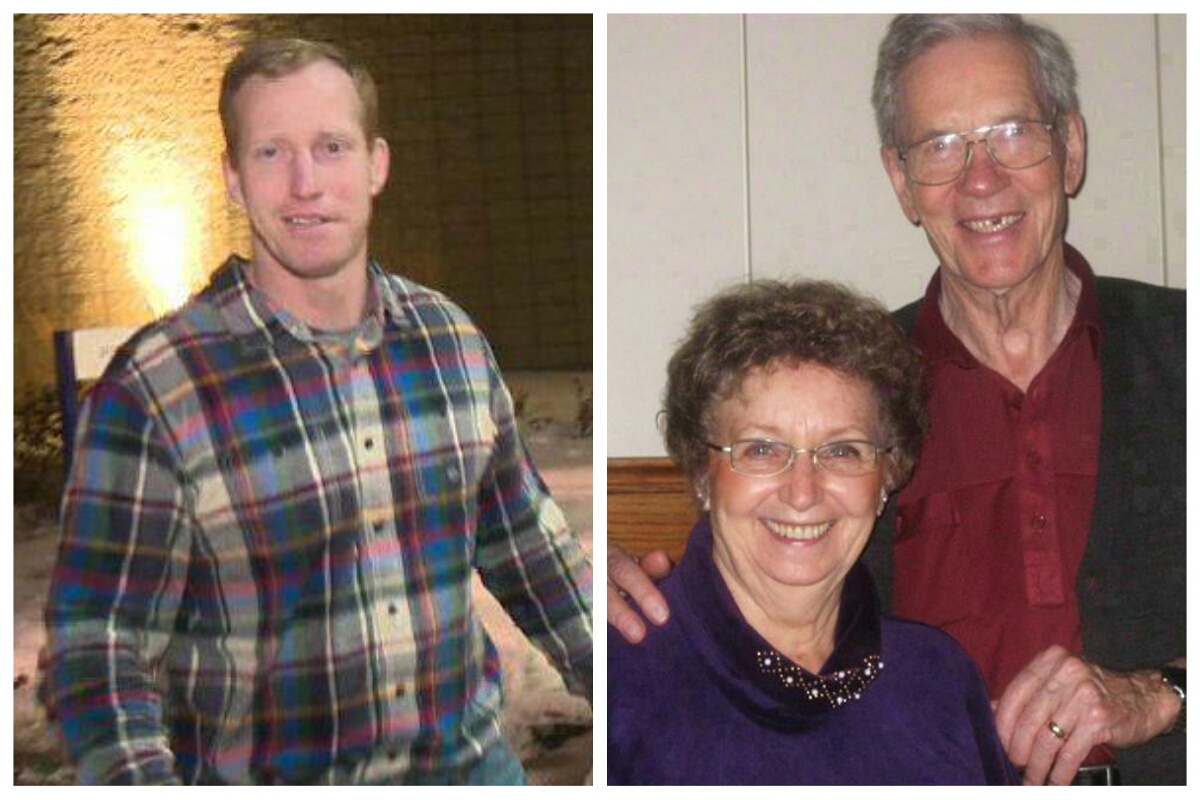

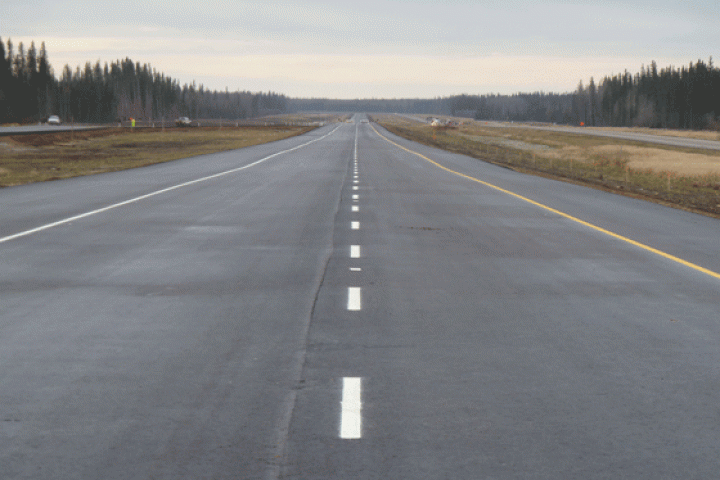





























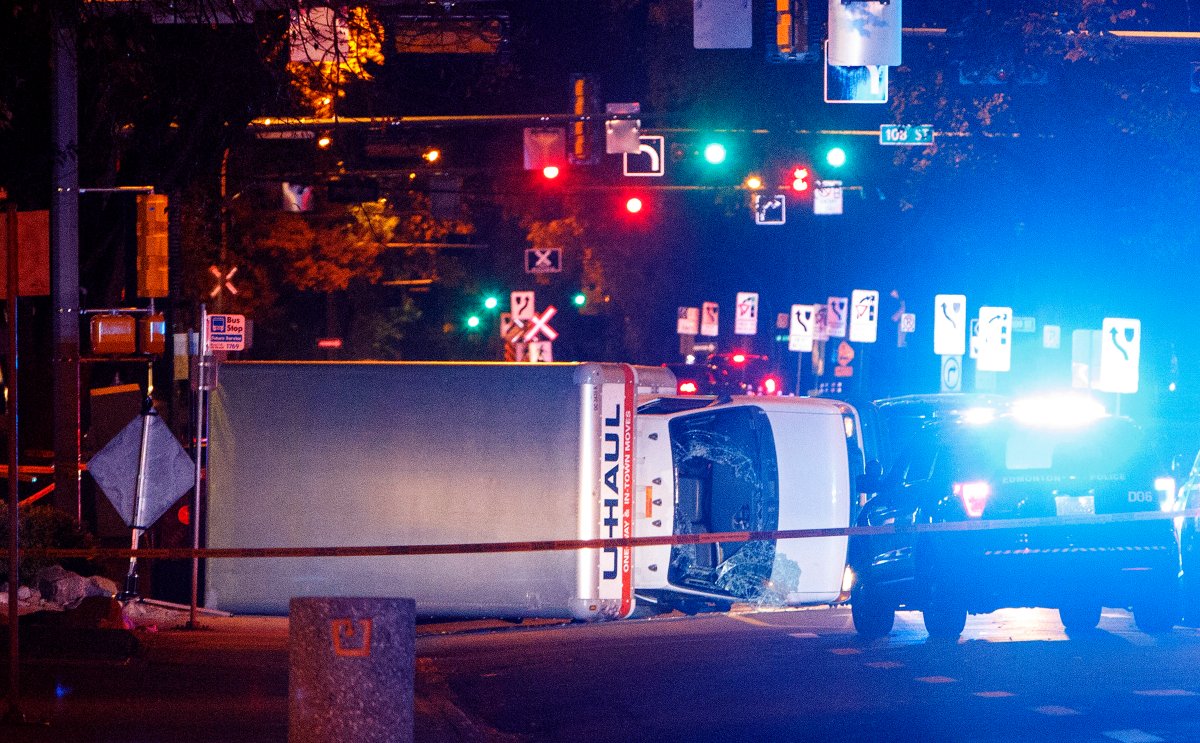




Comments